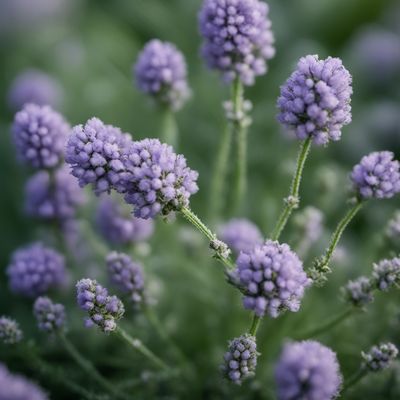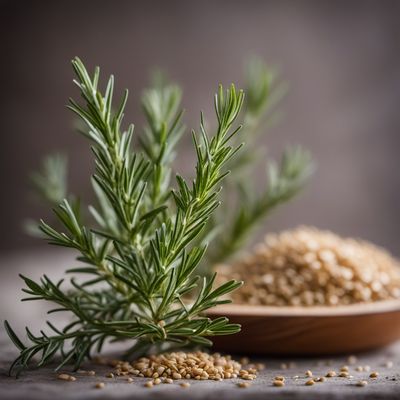
Ingredient
Rosemary and similar-
The Aromatic Herb
Rosemary is an evergreen herb with needle-like leaves and a woody stem. It has a strong, pine-like aroma and a slightly bitter, peppery taste. Thyme and oregano share similar characteristics, with thyme having a more subtle flavor and oregano offering a slightly sweeter and more pungent taste. These herbs are often used in Mediterranean, Middle Eastern, and European cuisines to enhance the flavor of roasted meats, vegetables, soups, stews, and sauces.
Origins and history
Rosemary has a rich history and has been used for culinary and medicinal purposes for centuries. It is native to the Mediterranean region and was highly regarded by ancient civilizations such as the Greeks and Romans. Rosemary was believed to have various health benefits and was used as a symbol of remembrance and fidelity. Thyme and oregano also have ancient origins and were valued for their aromatic properties and culinary uses. Today, these herbs are widely cultivated and enjoyed in cuisines around the world.
Nutritional information
Rosemary, thyme, and oregano are low in calories and provide small amounts of vitamins and minerals. They are particularly rich in antioxidants and contain compounds that may have anti-inflammatory and antimicrobial properties. These herbs also add flavor to dishes without the need for excessive salt or unhealthy fats. The nutritional content varies depending on the quantity used in recipes.
Allergens
Rosemary, thyme, and oregano are generally safe for consumption and do not pose significant allergenic risks. However, individuals with known allergies to other plants in the Lamiaceae family, such as mint or basil, may experience cross-reactivity and should exercise caution.
How to select
When selecting fresh rosemary, look for vibrant green leaves that are free from browning or wilting. The stems should be firm and not overly woody. For thyme and oregano, choose herbs with fresh-looking leaves that are not discolored or wilted. It is also advisable to opt for organic or locally sourced herbs whenever possible to ensure the best quality and flavor.
Storage recommendations
To store fresh rosemary, thyme, or oregano, wrap the herbs in a damp paper towel and place them in a plastic bag or airtight container. Store them in the refrigerator, where they can stay fresh for up to a week. Alternatively, you can freeze the herbs by chopping them finely and placing them in ice cube trays filled with water or olive oil. Once frozen, transfer the herb cubes to a freezer bag for long-term storage.
How to produce
Rosemary, thyme, and oregano can be easily grown in home gardens or in pots on balconies or windowsills. They require well-drained soil, plenty of sunlight, and regular watering. These herbs are relatively low-maintenance and can be harvested as needed by snipping off the desired amount of leaves.
Preparation tips
Fresh rosemary, thyme, and oregano can be used in various ways in the kitchen. They can be added to marinades, rubs, or dressings to infuse dishes with their aromatic flavors. The leaves can be stripped from the stems and chopped finely or used whole, depending on the recipe. These herbs are particularly well-suited for roasting with meats or vegetables, as their flavors intensify when exposed to heat. Dried rosemary, thyme, and oregano can also be used as a substitute for fresh herbs, although the flavors may be slightly different.
Culinary uses
Rosemary, thyme, and oregano are widely used in Mediterranean, Middle Eastern, and European cuisines. They are essential ingredients in dishes such as roasted lamb, grilled vegetables, tomato-based sauces, and hearty stews. These herbs can also be used to flavor oils, vinegars, and homemade breads. Additionally, they are often used as garnishes or infused into beverages such as herbal teas or cocktails.
Availability
Rosemary is commonly available in Mediterranean countries, as well as in North America and other regions with suitable climates. Thyme and oregano are also widely cultivated and can be found in various parts of the world. These herbs are often sold fresh, dried, or in powdered form in grocery stores and supermarkets.


